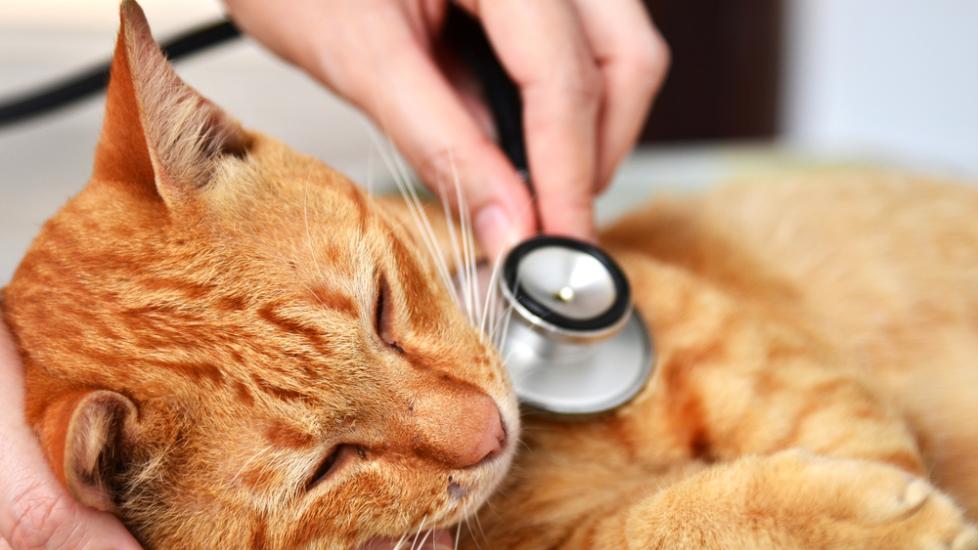Throat Cancer (Chondrosarcoma) in Cats
Chondrosarcoma of the Larynx and Trachea in Cats
A chondrosarcoma is a relatively rare and fast spreading tumor that originates in the cartilage, a connective collagenous tissue that is found throughout the body. Chondrosarcomas are one of several types of laryngeal tumors that can effect the larynx and trachea of a cat.
Over time, this type of tumor progresses, aggressively involving the surrounding tissues. As with many sarcomas, chondrosarcomas of the larynx and trachea are more common in middle aged and older cats. All breeds are at risk, but males are often at a slightly higher risk than females.
Symptoms and Types
Most symptoms are related to involvement of larynx, trachea and surrounding tissues.
- Changes in voice
- Loss of purr
- Harsh, noisy breathing
- Poor exercise stamina
- Difficulty in respiration, cat may breath with mouth open
- Loud noises while breathing
- Bluish mucous membranes
- Sudden collapse
- Difficulty in ingesting food
- Inability to swallow
Causes
The exact cause is still unknown.
Diagnosis
Your veterinarian will need a complete background medical history leading up to your cat's disease symptoms. Routine blood tests include a complete blood cell count, biochemistry profile, urinalysis and platelet count. The results are frequently normal in such cases.
Radiographic studies of the neck and chest can be helpful in confirming the diagnosis, along with imaging techniques, such as magnetic resonance imaging (MRI), and computed tomography (CT) scans. Another technique your veterinarian may choose is bronchoscopy, by which a tubular device is inserted into the body, in this case through the mouth and down into the windpipe, so that a more detailed visual examination can be conducted. This type of instrument can also sometimes be used to take a sample of tissue for biopsy, alleviating the need for a more invasive presurgical resection at the site.
Samples of fluid from the surrounding area may also be taken, and samples from the lymph nodes may show an abnormal amount of white blood cells, as the immune system reacts to the cancerous tumor.
Radiographs of the area will show whether metastasis has taken place.
Treatment
Being aggressive and malignant in nature, a chondrosarcoma of the larynx and trachea is usually life-threatening. Your veterinarian will need to excise the tumor tissue and possibly the surrounding tissue. As this tumor can affect very vital site of body, preservation of functions is very important. Your veterinarian will also be working to preserve your cat's laryngeal functions. The affected part of the trachea will need to be removed entirely by resection, and both ends of the normal trachea sutured together, a surgical process referred to as anastomosis. Radiotherapy is generally not effective in patients with chondrosarcoma of the larynx and trachea.
Living and Management
A cat that has been affected by this type of cancer may survive for a few months, but because of the malignant nature of this cancer, even after successful treatment the life span of such patients is quite low. Quality of life is another important consideration and many owners will arrange for peaceful euthanasia of their cats rather than force them to undergo the stress of surgery.
Good nutritional support is essential in these patients for ensuring maintenance of body weight and condition. It is important to monitor your cat's food and water intake while it is recovering. After surgery, your cat will very likely not have much of an appetite, and will not want to eat or drink in great quantities. It may be necessary to temporarily use a feeding tube placed directly into the stomach so that it is getting all of the nutrition it needs to completely recover. Your veterinarian will show you how to use the feeding tube correctly, and will assist you in setting up a feeding schedule.
After surgery, you should expect your cat to feel sore. Your veterinarian will give you pain medication for your cat to help minimize discomfort, and you will need to set up a place in the house where your cat can rest comfortably and quietly, away from other pets, active children, and busy entryways. Setting the cat litter box and food dishes close by will enable your cat to continue to care for itself normally, without exerting itself unduly. Use pain medications with caution and follow all directions carefully; one of the most preventable accidents with pets is overdose of medication.
